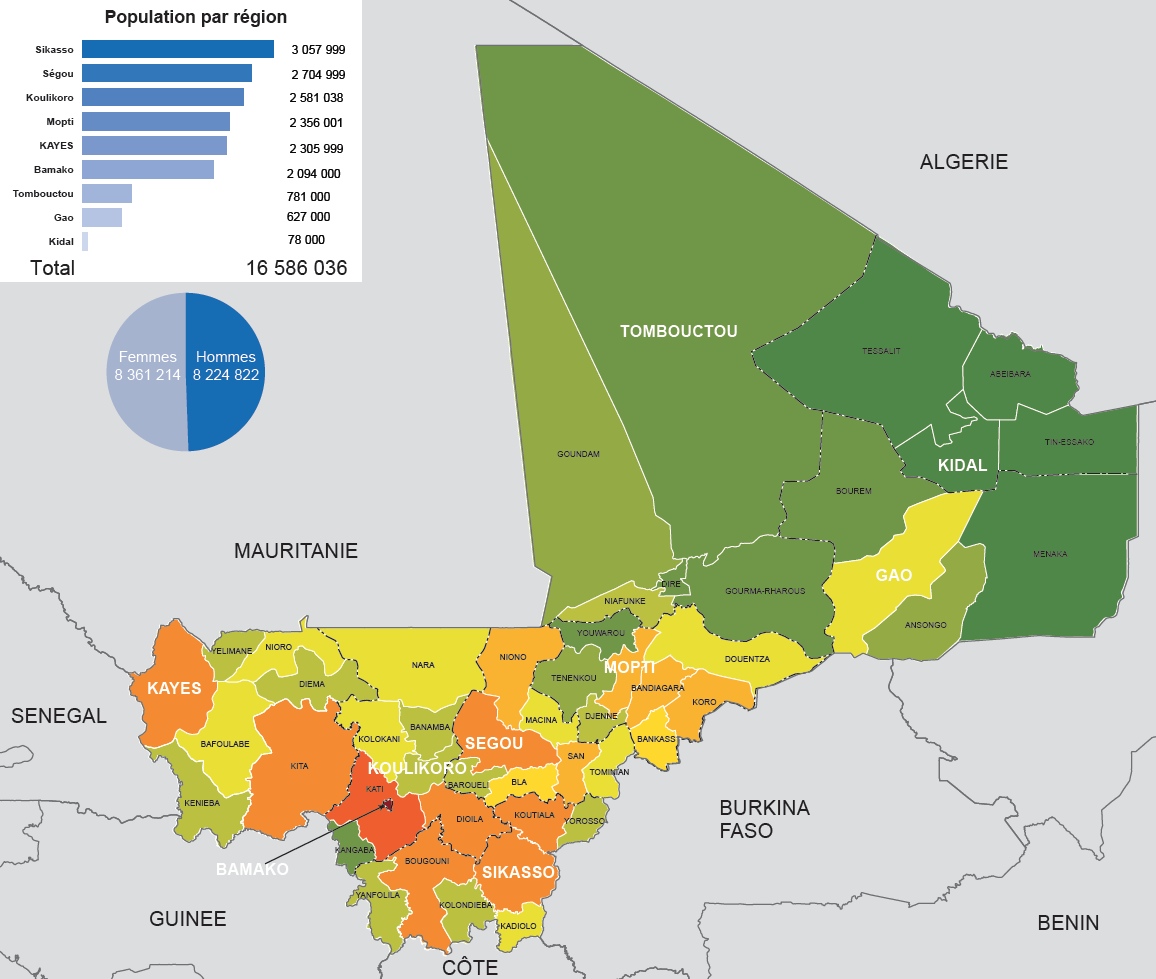Mali elects the Assemblée Nationale (National Assembly) utilizing the block vote with closed party lists. Whether a constituency elects a single or multiple deputies, voters cast a ballot for a single closed party list with as many candidates as there are deputies to be elected. If the list gains a majority of the vote in the first round, the entire list is elected. Otherwise, the top two lists compete in a second round with the winning list of candidates elected.
Administratively, Mali is divided into regions, which in turn are divided into cercles. The capital district of Bamako is divided equivalently into communes. Each cercle for the regions and each commune in Bamako also serves as an electoral constituency.
Malians who live abroad also elect 13 deputies but I do not know if they are elected from a single or multiple constituencies.
The total number of members of the Assemblée Nationale (National Assembly) rose from 129 in 1992 to 160 in 1997. Though Mali has used the same basic electoral system, the expansion in the size of Parliament results in the definition of multiple electoral systems:
Mali 1 (1992): 129 seats.
Mali 2 (1997-): 160 seats.
The table below shows the apportionment of mandates to constituencies. One seat in 1992 was not filled due to disqualification of the winner and I have been unable to ascertain to which constituency the seat belongs.
Sources: Cheick Oumar Diarrah, Le Défi Démocratique au Mali (Paris: Éditions L’Harmattan 1996); various official sources.
Below are maps of Malian regions and cercles as well as communes in Bamako.
Map Sources: Office for the Coordination of Humanitarian Affairs (OCHA), REACH.



